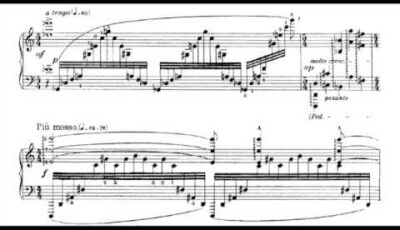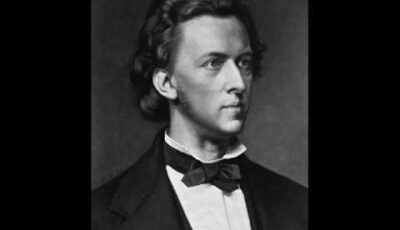-
Chopin – Waterfall Étude, Op. 10, No. 1 in C Major
Chopin’s “Waterfall” Étude is a technical piano study in reach and arpeggios. Composed in 1829, it focuses on stretching the fingers. Also known as Étude Op. 10, No. 1 in…
-
Bartok Op. 18 Etudes for Piano
Bartok Op 18 Etudes – Bela Bartok’s 3 piano etudes were written in Rákoskeresztúr, Hungary in 1918. No 1 features disjunct chromaticism, tiring to play. No 2 has extended arpeggios…
-
Sibelius’ Intermezzo – Karelia Suite
Sibelius’s Intermezzo from the Karelia Suite Op.11 was classitronically recreated by me, heavily influenced by Isao Tomita. I used a hard-edged dance string sound and arpeggiated the strings for a…
-
Samuel Barber – Rain Has Fallen, Op. 10, No. 1
…accompaniment with cascading arpeggios that mimic falling rain. Published in 1939, these songs showcase Barber’s deep-rooted background in singing and his love for poetry and the human voice. The lyrics…
-
Gabriel Fauré – Les Berceaux, Op. 23, No. 1
…of the cradles momentarily holds them back. The song starts with arpeggios in the piano bass line and builds to a forte climax before returning to a more flowing spirit….
-
Chopin’s Nocturne in B Flat Minor, Op. 9, No. 1 – Claudio Arrau, Piano
…John Field, the piece showcases a composition style that gives depth to Field’s works. It is described as a beautiful but melancholic piece with a theme of arpeggios and sadness….
-
Bourrèe in E Minor, BWV 996 – J. S. Bach
Bach’s Bourreè in E minor: Guitar Classic with arpeggiated chords….
-
Valentina Lisitsa Plays Beethoven Appassionata Sonata No. 23 in F Minor, Op. 57
…steadiness and epic architecture. Lisitsa’s technical skills were also impressive, particularly in the cascading arpeggios of the first movement and the distinct semiquavers in the finale. This rehearsal run took…








